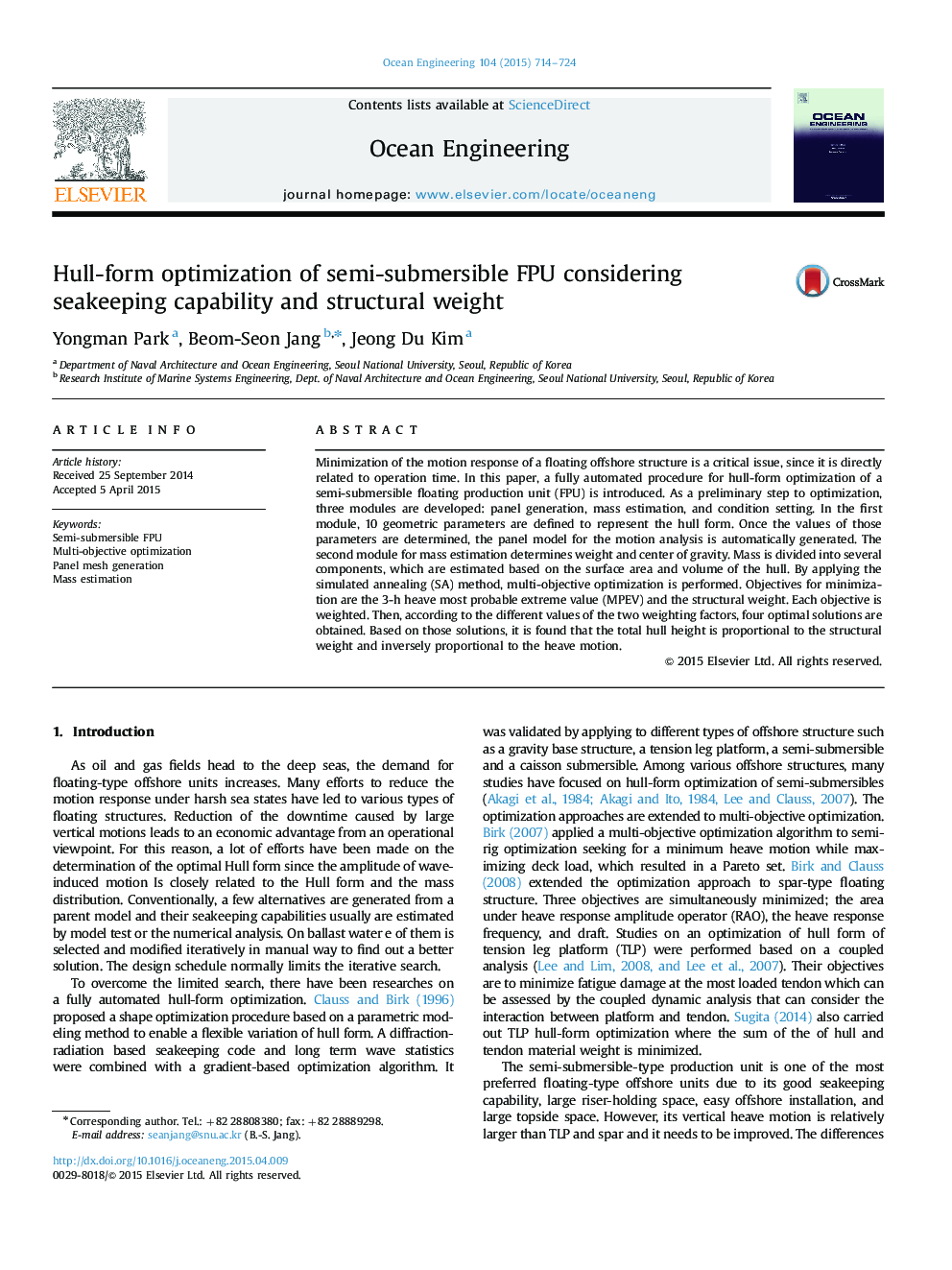| Article ID | Journal | Published Year | Pages | File Type |
|---|---|---|---|---|
| 1725394 | Ocean Engineering | 2015 | 11 Pages |
•This paper is focused on the hull form optimization of a semi-submersible FPU.•Three modules were developed: panel generation, mass estimation, and conditions setting.•Using the B-spline and the Bezier surface method, the geometry is represented•A higher weighting factor of the objective of steel weight leads to less steel weight.
Minimization of the motion response of a floating offshore structure is a critical issue, since it is directly related to operation time. In this paper, a fully automated procedure for hull-form optimization of a semi-submersible floating production unit (FPU) is introduced. As a preliminary step to optimization, three modules are developed: panel generation, mass estimation, and condition setting. In the first module, 10 geometric parameters are defined to represent the hull form. Once the values of those parameters are determined, the panel model for the motion analysis is automatically generated. The second module for mass estimation determines weight and center of gravity. Mass is divided into several components, which are estimated based on the surface area and volume of the hull. By applying the simulated annealing (SA) method, multi-objective optimization is performed. Objectives for minimization are the 3-h heave most probable extreme value (MPEV) and the structural weight. Each objective is weighted. Then, according to the different values of the two weighting factors, four optimal solutions are obtained. Based on those solutions, it is found that the total hull height is proportional to the structural weight and inversely proportional to the heave motion.
